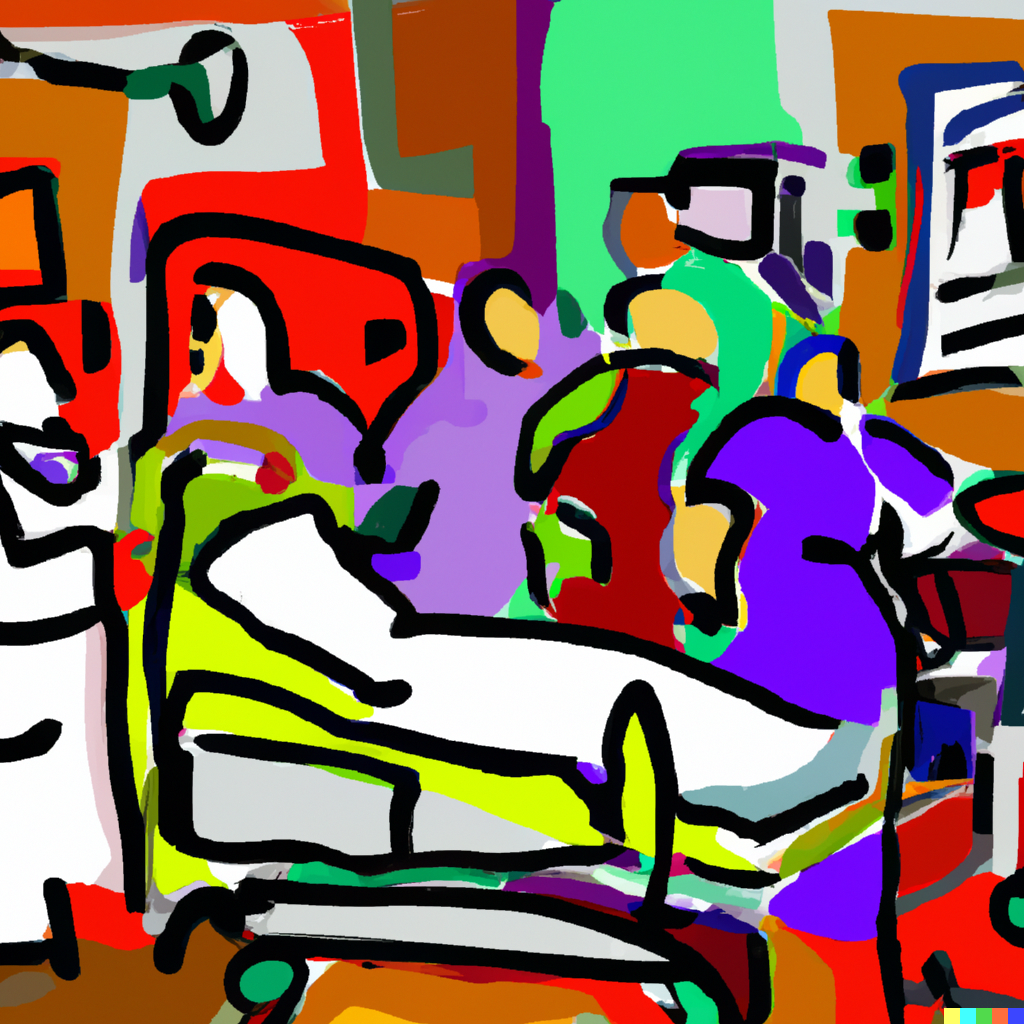Top Ten Ways Healthcare Providers can use High-Tech to Enable High-Touch
By: A Staff Writer
Updated on: Jul 29, 2023

Top Ten Ways Healthcare Providers can use High-Tech to Enable High-Touch.
- AI-Enabled Patient Triage: Patient triage is the process of sorting and prioritizing patients based on the urgency of their conditions. Using AI, hospitals can quickly and accurately categorize incoming patients, ensuring that critically ill individuals receive care first. This not only improves patient outcomes but also optimizes the use of hospital resources. AI algorithms can analyze a range of data, such as patient symptoms, medical histories, and demographic factors, to predict the level of care needed. Integrating AI triage into a hospital’s systems would involve working with technology providers to develop and train AI models that fit the hospital’s needs and data. Telehealth Services: Telehealth services include video consultations, digital diagnostics, and remote health monitoring. They increase access to healthcare for people in remote locations or those who can’t physically visit healthcare facilities due to their conditions. Telehealth allows frequent communication between patients and providers, fostering a solid relationship. Implementing telehealth involves procuring reliable and secure digital platforms, training healthcare professionals to use these tools, and promoting their use among patients. Overcoming barriers such as digital literacy among older patients and ensuring telecommunication infrastructure is also necessary.
- Remote Patient Monitoring: Remote patient monitoring (RPM) uses wearable devices to collect patient vital signs data in real time. This continuous data flow enables healthcare providers to monitor health trends, identify potential problems, and intervene promptly when anomalies are detected. To integrate RPM, healthcare providers should invest in appropriate devices and software and also ensure a secure network for data transmission to protect patient privacy. Patient education regarding the use of these wearables is also essential for successful implementation.
- Personalized Treatment Plans with AI/ML: AI/ML algorithms can analyze vast amounts of data to provide insights that humans might overlook. These insights can help create personalized treatment plans, considering genetic data, lifestyle choices, and previous responses to treatment. This can lead to improved patient outcomes by tailoring the care to individual needs. The implementation of AI/ML would involve collaboration with AI developers, procurement of software, and training healthcare providers on how to interpret and apply the generated insights.
- Predictive Analytics for Preventive Care: Predictive analytics uses historical data to identify patterns and predict future outcomes. In healthcare, this can help to identify individuals who are at risk of developing certain conditions, allowing providers to offer preventive interventions. This proactive approach can lead to early diagnosis and treatment, significantly improving patient outcomes. The implementation involves investing in analytic tools, training staff on their use, and establishing protocols for interventions based on predictive insights.
- Virtual Reality (VR) for Therapy: VR can provide realistic simulations for therapeutic purposes. It’s been effectively used for physical rehabilitation, by mimicking real-life activities for patients to practice, and for psychological therapy, by providing controlled exposure to anxiety-inducing scenarios. This engaging and flexible form of therapy can lead to improved outcomes. Implementing VR therapy involves investing in VR equipment, training therapists to use this technology, and conducting patient trials to measure its effectiveness.
- Chatbots for Patient Support: AI-enabled chatbots can provide round-the-clock support to patients, answering queries, providing advice, and even triaging cases based on severity. They offer a high-touch experience that can reassure patients, provide needed information, and direct them to human help when needed. The implementation of chatbots requires investment in AI technology, collaboration with developers to ensure the chatbot is effectively trained, and integration with existing health systems for seamless service.
- Electronic Health Records (EHRs): EHRs allow for centralized and digital record-keeping, ensuring all healthcare providers have access to a patient’s complete medical history. This leads to better, more informed decisions and continuity of care across different providers. To implement EHRs, healthcare providers need to adopt EHR software, ensure its compatibility with other systems, and train staff to use and update these records accurately.
- AI-Enabled Medication Management: AI can help monitor medication adherence by sending automated reminders and alerts to patients and informing healthcare providers if medication regimens are not being followed. This improves patient outcomes by ensuring medications are used effectively. Implementation would involve developing or procuring a dedicated app or platform, integrating it with other health systems, and educating patients on its use.
- Data-Driven Mental Health Care: AI and data analytics can help to identify early signs of mental health issues by analyzing data such as speech patterns, social media activity, and sleep habits. Early detection enables early intervention, which can significantly improve mental health outcomes. Implementing this technology would require collaboration with AI specialists, the development of algorithms suited to mental health detection, and training healthcare providers to interpret and respond to the insights generated.